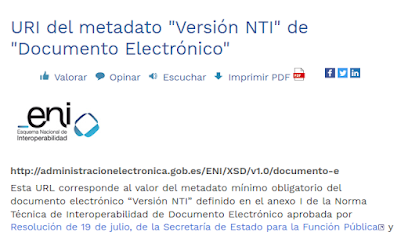ENI (4) Fastexml compatibility issues
0. Introduction
Fasterxml is very easy to use for managing XML, but there are some issues that are not compatible with JAXB. Here are some examples of how to solve this handicaps1. @XmlElementRef, @XmlMixed ...
Here is an example of the generated KeyInfoType class1 2 3 4 5 6 7 8 9 10 11 12 13 14 | public class KeyInfoType { @XmlElementRefs({ @XmlElementRef(name = "KeyName", namespace = "http://www.w3.org/2000/09/xmldsig#", type = JAXBElement.class, required = false), @XmlElementRef(name = "KeyValue", namespace = "http://www.w3.org/2000/09/xmldsig#", type = JAXBElement.class, required = false), @XmlElementRef(name = "RetrievalMethod", namespace = "http://www.w3.org/2000/09/xmldsig#", type = JAXBElement.class, required = false), @XmlElementRef(name = "X509Data", namespace = "http://www.w3.org/2000/09/xmldsig#", type = JAXBElement.class, required = false), @XmlElementRef(name = "PGPData", namespace = "http://www.w3.org/2000/09/xmldsig#", type = JAXBElement.class, required = false), @XmlElementRef(name = "SPKIData", namespace = "http://www.w3.org/2000/09/xmldsig#", type = JAXBElement.class, required = false), @XmlElementRef(name = "MgmtData", namespace = "http://www.w3.org/2000/09/xmldsig#", type = JAXBElement.class, required = false) }) @XmlMixed @XmlAnyElement(lax = true) protected List<Object> content; |
The possible solution is changing @XmlElementRef by @XmlElement
The proposal is:
1 2 3 4 5 6 7 8 9 10 11 12 13 14 15 16 17 18 19 20 21 22 23 24 25 26 27 28 29 30 31 32 | public class KeyInfoEduType { //Begin substitution @XmlElement(name = "KeyName", namespace = "http://www.w3.org/2000/09/xmldsig#", type = JAXBElement.class, required = false) @Getter @Setter protected String keyName; @XmlElement(name = "KeyValue", namespace = "http://www.w3.org/2000/09/xmldsig#", type = JAXBElement.class, required = false) @Getter @Setter protected KeyValueEduType keyValue; @XmlElement(name = "RetrievalMethod", namespace = "http://www.w3.org/2000/09/xmldsig#", type = JAXBElement.class, required = false) @Getter @Setter protected RetrievalMethodType retrievalMethod; @XmlElement(name = "X509Data", namespace = "http://www.w3.org/2000/09/xmldsig#", type = JAXBElement.class, required = false) @Getter @Setter protected X509DataEduType x509Data; @XmlElement(name = "PGPData", namespace = "http://www.w3.org/2000/09/xmldsig#", type = JAXBElement.class, required = false) @Getter @Setter protected PGPDataType pGPData; @XmlElement(name = "SPKIData", namespace = "http://www.w3.org/2000/09/xmldsig#", type = JAXBElement.class, required = false) @Getter @Setter protected SPKIDataType sPKIData; @XmlElement(name = "MgmtData", namespace = "http://www.w3.org/2000/09/xmldsig#", type = JAXBElement.class, required = false) @Getter @Setter protected String mgmtData; //End substitution |
Note that I am using Lombok for avoiding Getters and Setters.
It is more verbose... but seems to work
But this transformation must affect all classes that use the @XmlElementRef annotation
2. Special class ObjtectType
In schemas, it is recommended to use STRONGLY typed elements... But this class is used against this principle.
The designer of the schema, has made this class a "jumble" (the Spanish of "cajón de sastre"?) for storing any type of objects.
After manually analysing some examples of ENI documents, a more typed class is proposed.
The initial class partial code is:
1 2 3 4 5 6 | public class ObjectType { @XmlMixed @XmlAnyElement(lax = true) protected List<Object> content; |
and the proposal is:
1 2 3 4 5 6 7 8 9 | public class ObjectEduType { @XmlValue @Getter @Setter protected byte[] content; @XmlElement(name = "QualifyingProperties", namespace = "http://uri.etsi.org/01903/v1.3.2/#") @Getter @Setter protected QualifyingPropertiesEduType qualifyingProperties; |
3. The loss of namespaces prefixes in attributes affected by @XmlElement
There are many attributes annotated by @XmlElement, that do not have namespaces prefixes when are serialized to XML.
A possible and verbose solution is to add the "namespace" attribute to the annotation.
NOTE: This CANNOT be done in the @Attribute annotation!!
Here is the RSAKeyValueType class before these changes:
1 2 3 4 5 6 | public class RSAKeyValueType { @XmlElement(name = "Modulus", required = true) protected byte[] modulus; @XmlElement(name = "Exponent", required = true) protected byte[] exponent; |
and after the addition of "namespace":
1 2 3 4 5 6 | public class RSAKeyValueEduType { @XmlElement(name = "Modulus", namespace = "http://www.w3.org/2000/09/xmldsig#", required = true) protected byte[] modulus; @XmlElement(name = "Exponent", namespace = "http://www.w3.org/2000/09/xmldsig#", required = true) protected byte[] exponent; |

Comments
Post a Comment